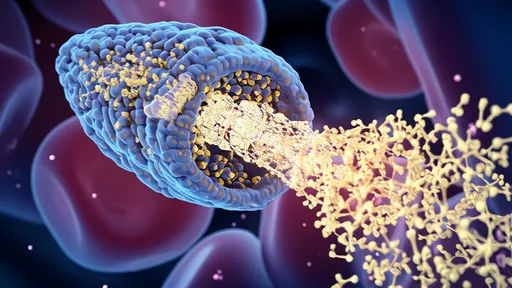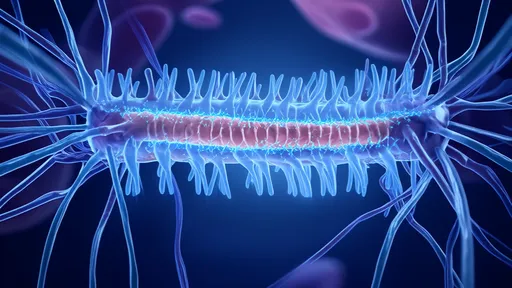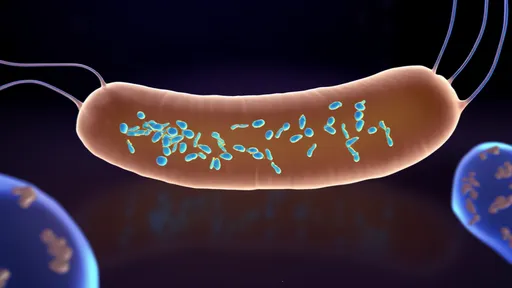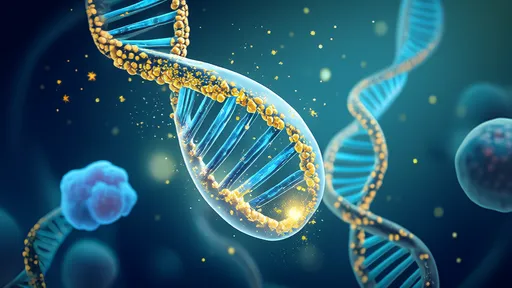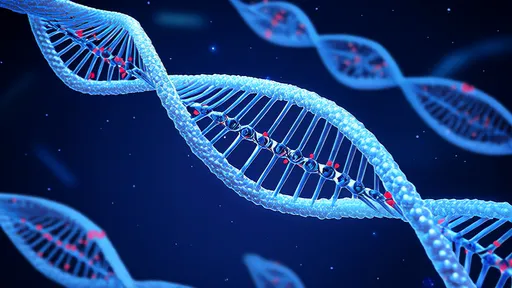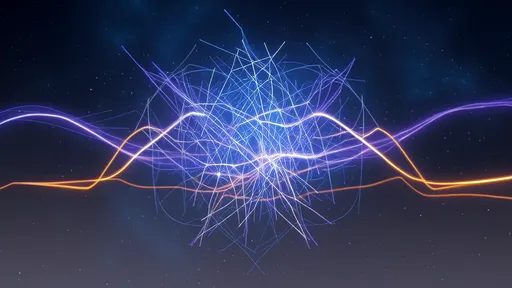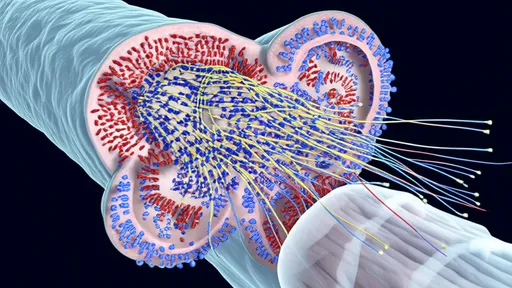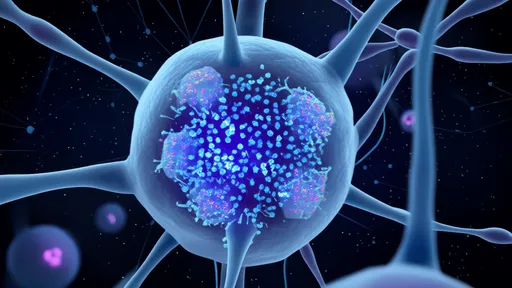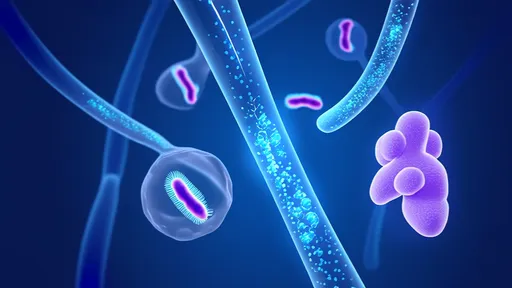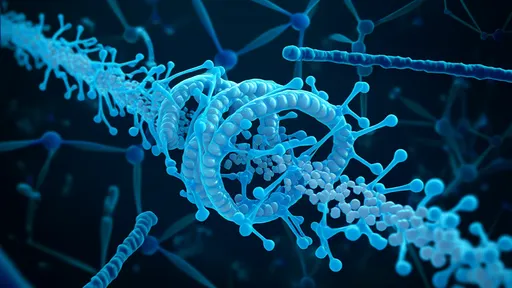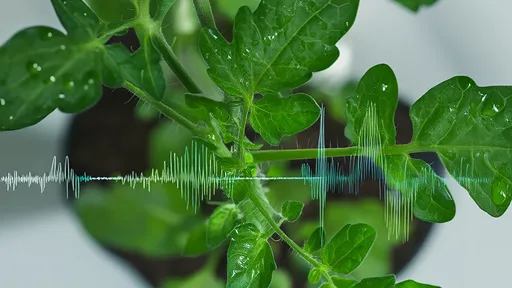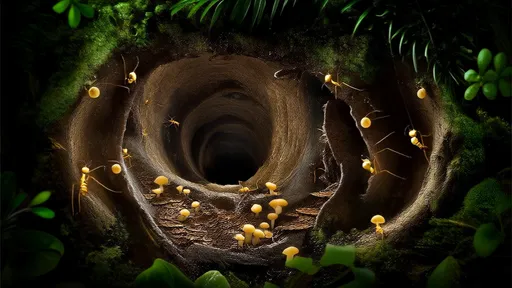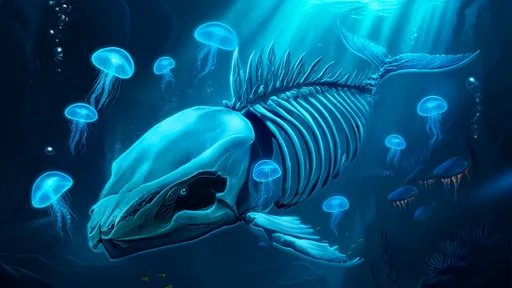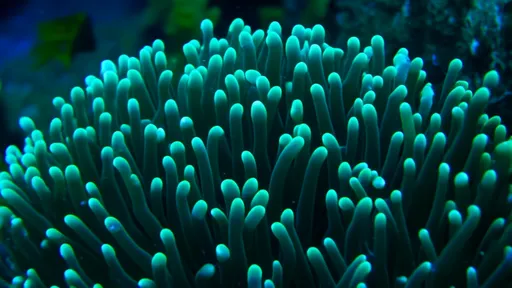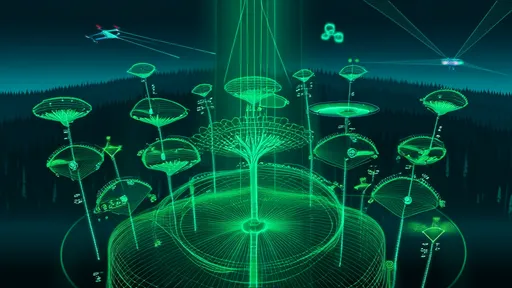In a groundbreaking discovery that reshapes our understanding of brain metabolism, researchers have identified glial cells as the unsung architects of neuronal energy distribution. The study reveals how these long-overlooked support cells orchestrate the precise mitochondrial allocation to neurons, challenging the neuron-centric dogma of neuroscience. This paradigm shift underscores glial cells' role as metabolic conductors in the symphony of brain function.
The human brain, despite accounting for merely 2% of body weight, consumes a staggering 20% of the body's energy. Neurons, with their incessant electrical activity, were traditionally viewed as the sole beneficiaries of this energy expenditure. However, new evidence demonstrates that astrocytes and other glial cells actively regulate the distribution and dynamics of mitochondria – the cellular power plants – within neuronal networks. This discovery positions glial cells as master regulators of cerebral energetics rather than passive bystanders.
Mitochondrial trafficking, the process by which these organelles move within neural processes, appears to be under precise glial control. Through a sophisticated signaling system involving calcium waves and metabolic intermediates, glial cells can direct mitochondria to regions of heightened neuronal activity. This targeted delivery ensures that synapses firing at high frequencies receive immediate energy reinforcement, while quiescent regions maintain baseline support.
Advanced imaging techniques have captured the mesmerizing dance of mitochondria along neuronal processes, with glial cells subtly guiding their movements. When researchers experimentally disrupted glial signaling, mitochondrial distribution became chaotic, leading to localized energy crises in neurons. This finding explains why neurodegenerative diseases often show both glial dysfunction and mitochondrial abnormalities as concurrent pathologies.
The metabolic coupling between glia and neurons operates through an elegant division of labor. While neurons focus on rapid electrical signaling, glial cells manage the complex logistics of energy distribution. This partnership resembles an advanced energy grid where glial cells function as smart transformers, dynamically routing power to neighborhoods experiencing high demand while preventing overload in others.
Lactate shuttle theory gains new dimensions with these findings. Previously debated as merely an alternative fuel delivery system, the glia-neuron lactate exchange now appears integral to mitochondrial regulation. Lactate serves not just as metabolic currency but also as a positioning signal that guides mitochondrial placement within neurons. This dual function explains why blocking lactate transport impairs both energy supply and organelle distribution simultaneously.
Disease implications are profound. Conditions ranging from Alzheimer's to Parkinson's and ALS all exhibit disrupted energy metabolism alongside glial abnormalities. The new research suggests these phenomena may be two sides of the same coin – glial cells failing in their role as mitochondrial dispatchers. Therapeutic strategies that restore glial control over mitochondrial distribution could potentially address the root cause rather than symptoms of neurodegeneration.
In the developing brain, glial-mediated mitochondrial allocation takes on added significance. As neural circuits form and prune connections, glial cells appear to privilege mitochondria to strengthening synapses while starving others. This metabolic selection mechanism may be as important for circuit refinement as the better-understood electrical activity-dependent processes. Neurodevelopmental disorders might therefore stem partly from faulty glial energy routing during critical periods.
The study employed a multi-angled approach, combining transgenic mouse models with real-time metabolic imaging in brain slices. Researchers developed novel probes that simultaneously track mitochondrial movement and energy status, revealing how glial signals precisely time organelle delivery to match neuronal demand peaks. Computational modeling confirmed that this system achieves near-optimal energy distribution with minimal waste.
Evolutionary perspectives add another layer of fascination. The glial-neuron energy partnership appears more pronounced in higher mammals, reaching its zenith in humans. This might explain our species' exceptional cognitive abilities despite relatively modest increases in neuron count compared to other primates. The metabolic efficiency afforded by sophisticated glial regulation could be the true evolutionary innovation behind human intelligence.
Clinical neurologists are reevaluating decades of brain energy studies through this new lens. Many unexplained phenomena – such as the selective vulnerability of certain neuron populations in disease – may find answers in regional variations of glial control. The substantia nigra's dopamine neurons, for instance, appear particularly dependent on glial-mediated mitochondrial support, explaining their early demise in Parkinson's.
Future research directions are already taking shape. Teams are investigating whether different glial subtypes specialize in managing mitochondrial populations for distinct neuron classes. Other studies explore how circadian rhythms and sleep states affect glial energy routing. The most ambitious projects aim to develop glial-targeted drugs that can recalibrate mitochondrial distribution in diseased brains.
This scientific revolution extends beyond neurology. The principles of decentralized energy management observed in glial networks are inspiring designs for more resilient power grids and distributed computing systems. Nature's solution to the energy distribution challenge – perfected over millions of years of evolution – may hold the key to solving human infrastructure problems.
As the scientific community digests these findings, textbooks are being rewritten to reflect glial cells' central role in brain energetics. The neuron doctrine that dominated neuroscience for over a century now makes room for a more nuanced understanding where glial cells emerge as active partners in cognition. This shift promises to unlock new approaches for treating brain disorders and perhaps even enhancing cognitive function in healthy individuals.
The study's lead researcher summarizes the implications: "We've essentially discovered the brain's energy internet – with glial cells as both the servers and routers that keep neuronal activity online. When this system fails, cognition crashes. Our therapeutic goal is now clear: we must learn to reboot and maintain this biological network."
For decades, the blood-brain barrier (BBB) has stood as a formidable gatekeeper, selectively shielding the brain from harmful substances while frustrating efforts to deliver life-saving therapeutics. This biological fortress, while essential for protecting our most vital organ, has rendered many promising treatments for neurological disorders ineffective. Now, a groundbreaking approach combining protein engineering and artificial intelligence is cracking the code to safe BBB penetration, potentially revolutionizing treatment for Alzheimer's, Parkinson's, and brain cancers.
In a groundbreaking development that could revolutionize the treatment of spinal cord injuries, researchers have successfully engineered hydrogel-based optical fibers capable of mimicking neural pathways. These "neural optical fibers" represent a fusion of advanced materials science and neurobiology, offering new hope for patients with previously untreatable damage to their central nervous system.
In a groundbreaking discovery that could revolutionize our approach to plastic waste, scientists have identified a surprising ally in the fight against polyethylene pollution: the humble wax worm. More specifically, the bacteria residing in the gut of these caterpillar-like creatures have demonstrated an extraordinary ability to break down one of the world's most stubborn plastics. This finding opens new avenues for tackling the global plastic crisis through biological means.
In a groundbreaking development that challenges our understanding of aging, scientists have demonstrated the potential to reverse cellular aging through a technique called transient reprogramming. This approach temporarily rewinds the epigenetic "clock" of cells without erasing their identity, opening new possibilities for regenerative medicine and age-related disease treatment.
In a groundbreaking leap for precision medicine, researchers have unveiled a light-controlled CRISPR delivery system using DNA-origami "nanodrones" – a fusion of nanotechnology and gene editing that promises unprecedented control over therapeutic targeting. This innovation, emerging from a collaboration between bioengineers and geneticists, reimagines drug delivery by combining the programmability of DNA nanostructures with the spatial precision of optogenetics.
In a groundbreaking study that could reshape our understanding of consciousness, neuroscientists have identified the thalamic reticular nucleus (TRN) as a potential "rhythmic switch" governing wakefulness through gamma wave modulation. This almond-shaped inhibitory structure, often described as the brain's gatekeeper, appears to orchestrate states of awareness by tuning neural oscillations like a conductor leading a symphony of consciousness.
For decades, chronic pain has remained one of medicine's most elusive challenges – a complex interplay of biological, psychological, and social factors that often defies conventional treatment. Now, groundbreaking research into the spinal cord's neural "fingerprints" of pain is revolutionizing our understanding of how persistent pain becomes etched into the nervous system. Scientists are mapping specialized neural circuits that appear to encode chronic pain with remarkable specificity, opening new avenues for targeted therapies.
In a groundbreaking discovery that reshapes our understanding of brain metabolism, researchers have identified glial cells as the unsung architects of neuronal energy distribution. The study reveals how these long-overlooked support cells orchestrate the precise mitochondrial allocation to neurons, challenging the neuron-centric dogma of neuroscience. This paradigm shift underscores glial cells' role as metabolic conductors in the symphony of brain function.
Scientists have uncovered a startling new pathway by which gut microbes communicate with the brain at lightning speed. Dubbed the "10-second gut-brain superhighway," this discovery centers on the vagus nerve's ability to transmit microbial signals faster than previously thought possible. The findings could revolutionize our understanding of conditions ranging from depression to irritable bowel syndrome.
In a groundbreaking discovery that bridges molecular biology and neuroscience, researchers have uncovered how the CPEB protein acts as a "molecular glue" to solidify long-term memories through an elegant phase transition mechanism. This finding not only revolutionizes our understanding of memory persistence but also reveals nature's ingenious solution to maintaining information at the molecular level.
In a groundbreaking discovery that blurs the line between botany and acoustics, researchers have uncovered evidence of tomatoes employing ultrasonic warfare against herbivorous insects. The study, published in Nature Plants, reveals how tomato plants emit high-frequency sounds when under attack - not as passive victims, but as active participants in their own defense.
In the dense rainforests of Central and South America, leafcutter ants have perfected an architectural marvel that puts human climate control systems to shame. These tiny engineers construct elaborate underground nests spanning hundreds of square feet, maintaining near-perfect temperature and humidity levels year-round – without using a single watt of electricity. As architects and engineers grapple with the urgent need to reduce building emissions, these insect-built structures offer profound lessons in passive climate regulation.
The depths of the ocean hold secrets that continue to astonish scientists, and among the most enigmatic phenomena is the "whale fall"—the carcass of a deceased whale sinking to the seabed. These massive organic deposits create transient ecosystems, supporting diverse marine life for decades. But beyond the visible scavengers and bone-eating worms, a hidden microbial world thrives, and within it, something extraordinary has been discovered: colossal bacteriophages, viruses that prey on bacteria, with genomes so large they defy conventional understanding.
In a groundbreaking discovery that could revolutionize coral reef monitoring, scientists have identified a natural early warning system for coral bleaching events. Certain coral species exhibit vivid fluorescent patterns when under thermal stress, acting as biological "sentry lights" that signal the onset of bleaching before visible damage occurs. This phenomenon, observed in reef-building corals across the Indo-Pacific, represents nature's own climate change alert system.
In a groundbreaking development for ecological research and climate science, researchers have harnessed advanced LiDAR technology to map the photosynthetic efficiency of trees across vast forested areas. Dubbed the "carbon pulse" of forests, this innovative approach provides unprecedented insights into how trees absorb and process carbon dioxide at an ecosystem scale. The implications for understanding carbon sequestration, forest health monitoring, and climate change mitigation strategies are profound.
